 W
WHNLMS A was an A-class minesweeper minesweeper of the Royal Netherlands Navy that was scuttled by her crew during the Battle of Java. She was later re-floated and repaired by the Japanese and converted into auxiliary submarine chaser Cha-113 or No. 113.
 W
WAikoku Maru (愛国丸) was an armed merchant cruiser of the Imperial Japanese Navy in World War II. The ship entered service in 1940, the ship was later converted to an ammunition ship. She was destroyed in February 1944.
 W
WAkagi Maru was one of three Akagi Maru-class armed merchantmen of the Imperial Japanese Navy, and was launched in 1936. Akagi Maru was used initially used as a refrigerated cargo/passenger ship between ports in Japan, Europe and South America. The ship took part in World War II in the Pacific Ocean and was sunk with great loss of life by air attack on 17 February 1944 in Chuuk Lagoon as a part of the Allied Operation Hailstone.
 W
WAkashi was a Japanese repair ship, serving during World War II. She was the only specifically designed repair ship operated by the Imperial Japanese Navy. The navy based her design on the US Navy's USS Medusa.
 W
WAsahi was a pre-dreadnought battleship built for the Imperial Japanese Navy (IJN) in the late 1890s. As Japan lacked the industrial capacity to build such warships itself, the ship was designed and built in the United Kingdom. Shortly after her arrival in Japan, she became flagship of the Standing Fleet, the IJN's primary combat fleet. She participated in every major naval battle of the Russo-Japanese War of 1904–1905 and was lightly damaged during the Battle of the Yellow Sea and the Battle of Tsushima. Asahi saw no combat during World War I, although the ship participated in the Siberian Intervention in 1918.
 W
WAsama Maru was a Japanese ocean liner owned by Nippon Yusen Kaisha (NYK). The ship was built in 1927–1929 by Mitsubishi Shipbuilding & Engineering Co. at Nagasaki, Japan. The vessel was named after an important Shinto shrine.
 W
WThe Ashizuri-class combat support ship was a class of two support ships of the Imperial Japanese Navy (IJN), serving during World War II.
 W
WAyatosan Maru was a 9,788 gross ton (10,930DWT) freighter that was built by Tama Shipbuilding Co., Tamano for Mitsui & Co. Ltd. launched in 1939. She had been intended to run the New York passenger and freight run, however she was requisitioned by the Imperial Japanese Navy and fitted out as a high-speed transport, which was completed in May 1941.
 W
WThe Chichibu Maru (秩父丸) was a Japanese passenger ship which, renamed Kamakura Maru, was sunk during World World II, killing 2,035 soldiers and civilians on board.
 W
WHakuhō Maru was a Japanese deep sea trawler and survey/inspection ship that was requisitioned by the Imperial Japanese Navy during World War II and served in varying roles as a patrol boat, transport ship, cargo ship, minesweeper, and escort ship.
 W
WHakuyo Maru was a Ministry of Agriculture and Forestry fisheries inspection and observation ship that was requisitioned by the Imperial Japanese Navy during World War II for service primarily as an auxiliary survey vessel but later as a submarine chaser, cargo ship, and patrol boat.
 W
WThe Hashima-class cable layers were the only class of purpose-built cable layers of the Imperial Japanese Navy (IJN), serving during World War II. Four vessels were built in 1939–41 under the Maru 4 Programme.
 W
WThe Hayasui was a Japanese fleet oiler of the Imperial Japanese Navy (IJN), serving during World War II.
 W
WHōkoku Maru (報國丸) was an armed merchant cruiser of the Imperial Japanese Navy in World War II. She was the name ship of her class. The ship entered service in 1941, and was employed as a commerce raider and submarine tender. She was sunk in a surface action in November 1942.
 W
WThe Italian auxiliary cruiser Ramb II was a pre-war banana boat built at Monfalcone by the CRDA in 1937. She briefly served as an auxiliary cruiser with Regia Marina early in World War II before becoming an auxiliary transport with the Imperial Japanese Navy later in her career.
 W
WThe Italian auxiliary cruiser Ramb II was a pre-war banana boat built at Monfalcone by the CRDA in 1937. She briefly served as an auxiliary cruiser with Regia Marina early in World War II before becoming an auxiliary transport with the Imperial Japanese Navy later in her career.
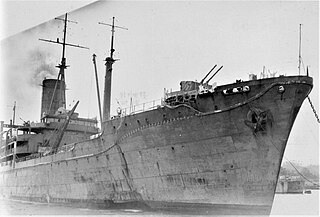 W
WIrako (伊良湖) was a Japanese food supply ship that served during the Second World War. Constructed for the transport of food-stuffs, Irako was eventually commissioned for other roles, including troop transport, munitions transport, and Pacific survey missions. The crew of Irako is honored, along with many other seamen, in Tokyo, Japan.
 W
WItsukushima (厳島) was a medium-sized minelayer of the Imperial Japanese Navy, which was in service during the Second Sino-Japanese War and World War II. She was named after Itsukushima, a sacred island in Hiroshima Prefecture of Japan. She was the first warship in the Imperial Japanese Navy with all-diesel engine propulsion.
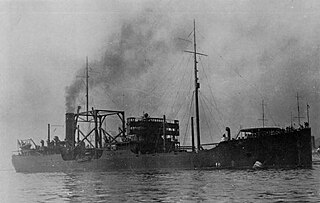 W
WKamoi was an oiler/seaplane tender/flying boat tender of the Imperial Japanese Navy, serving from the 1920s through World War II. She was initially planned in 1920 as one of six of the oilers under the Eight-eight fleet final plan.
 W
WKashino (樫野) was a unique ammunition ship operated by the Imperial Japanese Navy from 1940 until she was sunk by a United States Navy submarine in 1942. She was built to carry the Yamato-class battleship's main battery from the Kure Naval Arsenal to the shipyards where the battleships were being constructed. When the ships were completed, Kashino was converted to carry ammunition and other supplies.
 W
WThe MV Kinai Maru was an 8360 gross ton freighter built by Mitsubishi Shipbuilding & Engineering Company Ltd, Nagasaki, Japan, in 1930 for Osaka Shosen Kaisha for the Yokohama-New York City cargo run.
 W
WThe Kinesaki class food supply ship was a class of four reefer ships of the Imperial Japanese Navy (IJN), serving during and after World War II. Eleven vessels were planned under the Maru 4 Programme, Maru Rin Programme and Kai-Maru 5 Programme, however, only four vessels were completed.
 W
WMV Kinryu Maru was a 9,310 gross register tons (GRT) passenger cargo ship built by Kawasaki Dockyard Company, Kobe for Kokusai Kisen Kabushiki Kaisha in 1937. She was requisitioned on 1 September 1938 by the Imperial Japanese Navy and later converted to an armed merchant ship.
 W
WKita Maru was a Dutch-built, steel-hulled steamship that was seized by the Imperial Japanese Navy during World War II and converted into an auxiliary transport.
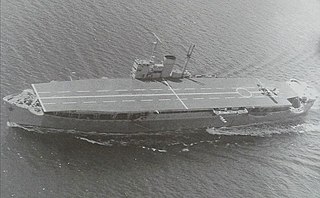 W
WLanding craft carriers or landing craft depot ships were an innovative type of amphibious warfare ship developed by the Imperial Japanese Army during World War II. The prototype was developed in secrecy under the pseudonyms Ryujo Maru and Fuso Maru using features later adopted by other navies for dock landing ships and amphibious transport docks. Additional ships were built after combat experience validated the concept, but most were completed after the Japanese invasions of the early war, and used primarily as troopships during later operations. Today's amphibious assault ships bear a strong similarity to this concept.
 W
WMagane Maru was an auxiliary minelayer, gunboat, and patrol boat of the Imperial Japanese Navy during World War II.
 W
WNisshin (日進) was a seaplane tender (CVS) of the Imperial Japanese Navy during World War II.
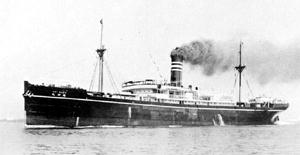 W
WŌmi Maru (近江丸) was the name of two Japanese ocean liners owned by Nippon Yusen Kaisha (NYK), Tokyo.
 W
WThe Shirakumo-class destroyers was a class of two torpedo boat destroyers (TBDs) of the Imperial Japanese Navy, built in Britain in 1901-02.
 W
WShirataka was a medium-sized minelayer of the Imperial Japanese Navy, which was in service during the Second Sino-Japanese War and World War II. She was the world's first purpose-built anti-submarine netlayer. Also, unlike any other warship in the Japanese Navy, she had two chrysanthemum crests due to her unusual bow configuration.
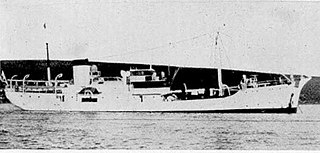 W
WShunkotsu Maru was a Japanese deep sea trawler and survey/meteorological ship that was requisitioned by the Imperial Japanese Navy during World War II and served in varying roles as a patrol boat, transport ship, cargo ship, minesweeper, subchaser, and escort ship and as an oceanographic research ship after the war.
 W
WThe Sokuten class auxiliary minelayer was a class of minelayers of the Imperial Japanese Navy (IJN), serving during the 1910s and World War II. They were called the Sokuten class from their nameship. And, they were called Toshima class after the Sokuten retired. Also, by the book, the Natsushima was included to this class. This article handles the Natsushima and Sokuten class collectively, because they do not have a big difference. Their official class name was not mentioned in the IJN official documents.
 W
WThe Sunosaki-class combat support ship was a class of two support ships of the Imperial Japanese Navy (IJN), serving during World War II.
 W
WSuwa Maru (諏訪丸) was a Japanese ocean liner owned by Nippon Yusen Kaisha (NYK). The ship was launched in 1914 by Mitsubishi Shipbuilding & Engineering Co. at Nagasaki, Japan. The ship was named for the Suwa Jinja, a noted Shinto shrine located in Suwa, Nagano.
 W
WTama Maru was an auxiliary minesweeper of the Imperial Japanese Navy during World War II.
 W
WTama Maru No. 3 was an auxiliary minesweeper of the Imperial Japanese Navy during World War II.
 W
WTama Maru No. 5 was an auxiliary minesweeper of the Imperial Japanese Navy during World War II.
 W
WTeiyō Maru was an auxiliary fleet oiler of the Imperial Japanese Navy (IJN) during World War II. She was converted from civilian service to a naval auxiliary as the Pearl Harbor attack force sailed; and participated in the major offensive operations of the first six months of Pacific combat. She then served in the northern Pacific until July 1944, and was sunk in the battle for convoy Hi-71 when reassigned to the defense of the Philippines.
 W
WTōhō Maru was an oiler of the Imperial Japanese Navy (IJN). The ship was launched as a civilian oil tanker for Iino Kaiun Kaisha on May 1, 1936. On August 20, 1941 the ship was requisitioned by the IJN and converted into a fleet replenishment oiler. The ship subsequently served Japan during the Pacific Campaign of World War II. On March 29, 1943 the ship was torpedoed and sunk in the Makassar Strait at 00°00′N 118°19′E by the United States Navy submarine Gudgeon (SS-211).
 W
WThe Tokai Maru was a Japanese passenger-cargo ship built by the Mitsubishi Heavy Industries shipyard that was sunk in Apra Harbor, Guam, in 1943, during World War II. It had served as a fast ship service between New York City and Japan for Osaka Shosen Co. before World War II; during the war it was used as a military transport ship for the Imperial Japanese Navy.
 W
WSM U-55 was one of the six Type U-51 U-boats of the Imperial German Navy during the First World War.
 W
WYasukuni Maru (靖国丸) was a Japanese ocean liner owned by Nippon Yusen Kaisha (NYK). The ship was launched in 1930 by Mitsubishi Shipbuilding & Engineering Co. at Nagasaki, on the southern island of Kyūshū, Japan, entering service in 1930. The ship was named for the Yasukuni Shrine, a famous Shinto shrine dedicated to the war dead of Japan, located in Tokyo.
 W
WThe Yoshida Maru (吉田丸) was a Japanese cargo ship owned by Nippon Yusen Kaisha. The ship was built in 1941 by Hakodate Dock at Hakodate on the northern island of Hokkaidō.